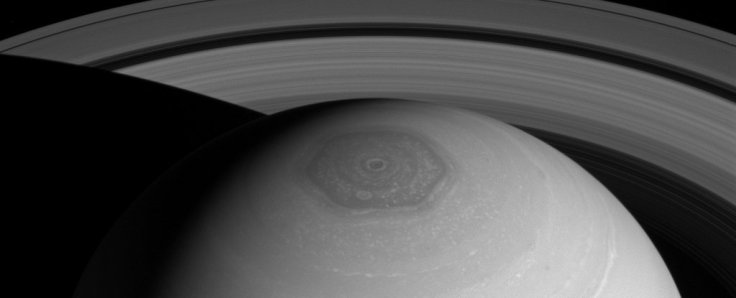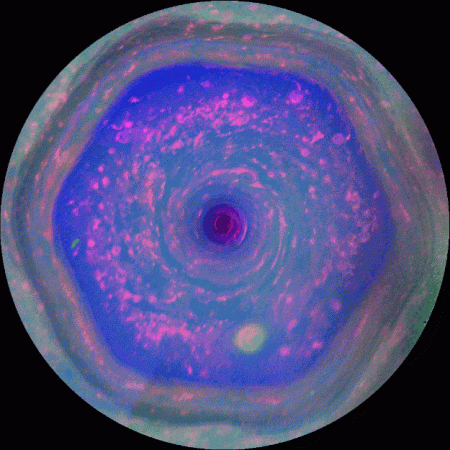Researchers created a 3D model that was able to explain how the giant hexagon-shaped storm on Saturn was formed. Through the 3D model, the researchers were able to identify the various atmospheric factors that contributed to the storm's formation.
The study regarding Saturn's bizarre storm was carried out by researchers from Harvard University. They presented their findings in a new paper published in the Proceedings of the National Academy of Sciences of the United States of America.

Saturn's Hexagonal Storm
Since 1981, NASA has been aware of the massive hexagon-shaped feature on the Saturn through its Voyager mission. Through follow-up observations such as those carried out by the Cassini probe, the agency learned that the strange feature is actually a massive storm that extends thousands of kilometers deep into Saturn's atmosphere.
For decades, scientists have been trying to understand how the hexagonal storm formed on the planet. One theory suggests that it was formed by the alternating jets that came from deep within the atmosphere where gas is more turbulent.
Saturn's Atmospheric Activity
Recently, a group of researchers presented a new study that explains the atmospheric activity of Saturn. Using a 3D model, the researchers were able to illustrate the factors that may have led to the formation of the planet's hexagonal storm. The researchers explained that in gas giants such as Saturn, massive polar cyclones tend to form in their outer layers. Aside from cyclones, the atmospheric conditions of gas giants can also trigger the formation of alternating zonal flows and high-latitude eastward jet pattern.
The interaction between these factors can lead to the formation of massive vortices that can affect the movement of eastward jets, creating a distinct shape in the atmosphere. "The analysis of the simulation suggests that self-organized turbulence in the form of giant vortices pinches the eastward jet, forming polygonal shapes," the researchers wrote in their study. "We argue that a similar mechanism is responsible for exciting Saturn's hexagonal flow pattern."

Further Studies On Saturn
Although the researchers were only able to create triangle-shaped storms using their 3D model, they noted that their method only takes into account a portion of Saturn's radius. This means the model does not provide a complete representation of the planet's atmosphere. Further studies on Saturn could provide more detailed models regarding the formation of the storm.









